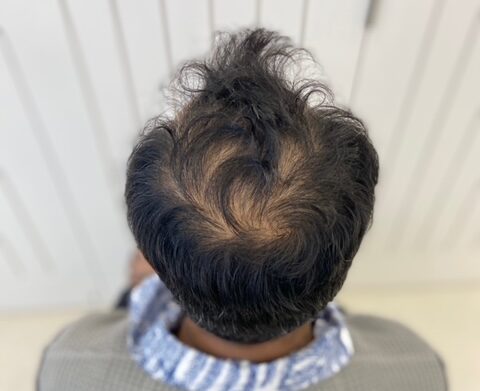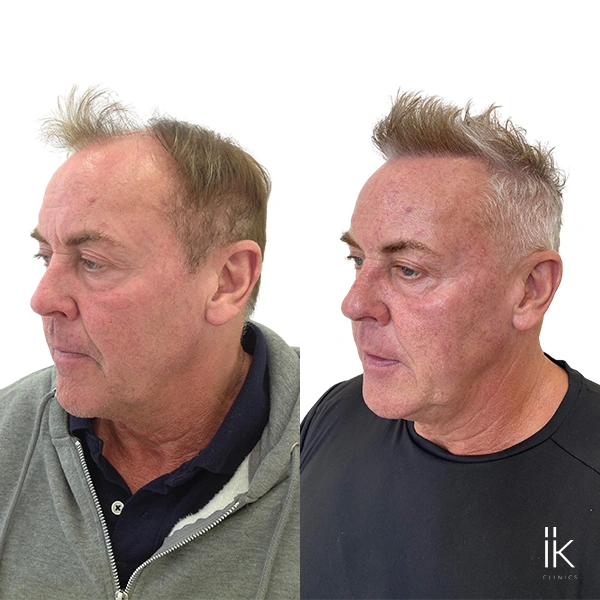Whether it’s noticing extra strands of hair in the shower or seeing your hairline creeping back in photos, the fear of losing your hair can feel isolating. But often, the root cause lies deeper – hidden in your DNA.
Genetics plays a significant role in hair loss, leaving many wondering if they’re destined to follow in the footsteps of a balding parent or grandparent. But is it really inevitable, or can you fight back?
Let’s unpack the hereditary factors behind hair loss and explore ways to address it effectively.
Understanding the Genetic Link to Hair Loss
Hair loss that is inherited from your family is commonly referred to as androgenetic alopecia, more widely known as male or female pattern baldness.
For men, this often starts as a receding hairline or thinning at the crown, while women tend to experience diffuse thinning across the scalp, especially near the parting.
This type of hair loss is driven by a hormone called dihydrotestosterone (DHT), which is derived from testosterone. DHT attaches to hair follicles, gradually shrinking them and reducing their ability to grow healthy hair.
Interestingly, this genetic predisposition can come from either side of your family, meaning both your mother’s and father’s genes contribute to the likelihood of hair loss.
While you can’t change your genetic makeup, understanding the role of DNA in hair loss empowers you to take control by exploring effective interventions.
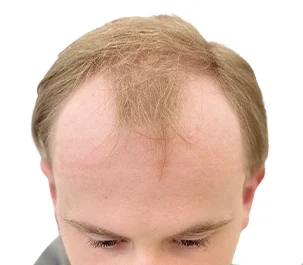
Can You Fight Your DNA?
The short answer is yes, to a degree. While it’s impossible to alter your genetic code, you can manage and often slow the progression of hereditary hair loss.
Early intervention is crucial to achieving the best results. The good news is that modern advancements in hair care and treatment provide a range of options, from lifestyle adjustments to cutting-edge medical procedures.
The trick is identifying the right combination of approaches for your specific situation.
Non-Surgical Approaches to Hair Loss
For those in the early stages of hair loss, several non-surgical solutions can make a big difference.
Medications such as minoxidil, a topical solution, and finasteride, an oral prescription, are commonly recommended. Minoxidil works by improving blood flow to the scalp, encouraging hair follicles to remain in the growth phase.
Finasteride, on the other hand, blocks the production of DHT, preventing further follicle shrinkage. While these treatments aren’t a cure-all, they can significantly slow down hair loss and even stimulate regrowth in some cases.
Beyond medications, making small but impactful lifestyle changes can also support hair health. A balanced diet rich in essential vitamins and minerals – like biotin, zinc, and iron – nourishes hair from within.
Reducing stress is another critical factor, as stress-induced hair loss can worsen hereditary conditions. Practices like mindfulness, yoga, or simply ensuring you get enough sleep can make a noticeable difference.
Another promising option is platelet-rich plasma (PRP) therapy. This innovative treatment involves injecting your own blood plasma into the scalp to stimulate hair growth and improve follicle health.
While not suitable for everyone, PRP has shown great potential for thickening hair in areas affected by thinning.
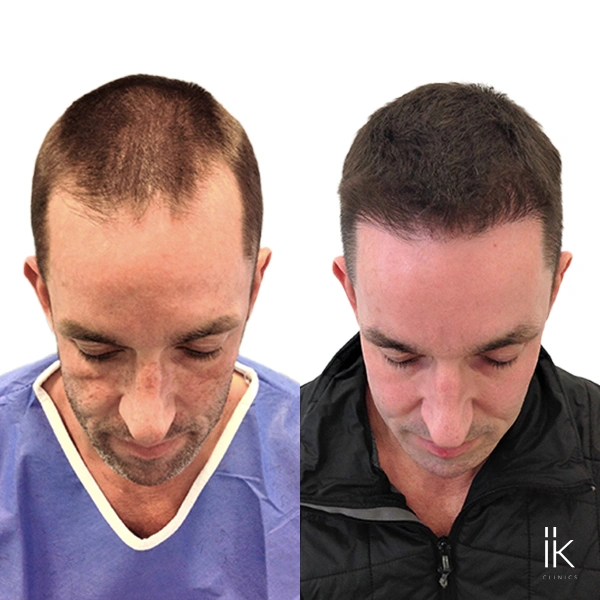
Surgical Solutions for Long-Term Results
For those dealing with advanced hair loss, surgical procedures may offer a more permanent solution.
Hair transplant surgery, such as Follicular Unit Extraction (FUE) or Follicular Unit Transplantation (FUT), involves redistributing hair from dense areas (typically the back of the head) to balding regions.
FUE is minimally invasive, leaving tiny, barely noticeable scars, while FUT can cover larger areas with impressive results, though it may involve a slightly longer recovery period.
Another increasingly popular option is scalp micropigmentation. This non-invasive procedure involves applying tiny dots of pigment to the scalp to replicate the appearance of closely cropped hair. While it doesn’t restore actual hair, it can give the illusion of a fuller head of hair, making it an excellent choice for men embracing the buzz-cut look.
Combining surgical treatments with ongoing therapies like minoxidil or PRP can help maximise results, ensuring long-lasting improvements in both appearance and confidence.
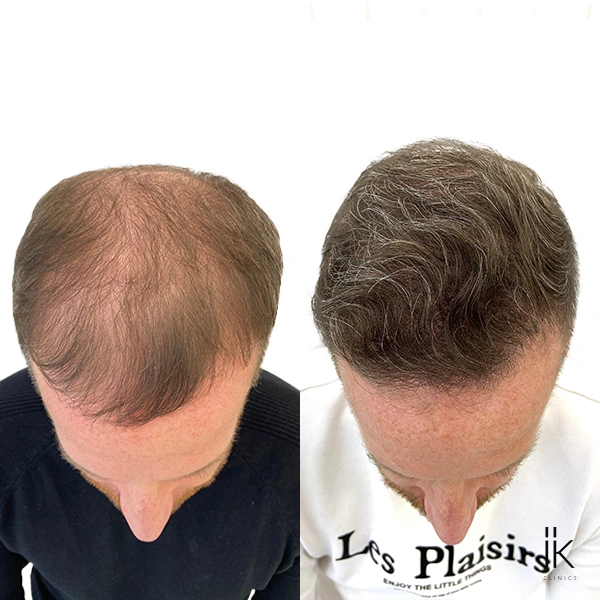
Taking Action and Staying Positive
Hair loss, especially when driven by genetics, can feel overwhelming, but it’s important to remember that you’re not alone. Millions of people navigate this journey and find solutions that work for them.
Remember, the key is to act early and explore your options before hair loss becomes too advanced.
Whether you choose a non-surgical approach, surgical intervention, or a combination of treatments, there are effective ways to combat the effects of hereditary hair loss. Consulting a professional, like our team at IK Clinics, early on will help you develop a tailored plan that meets your specific needs and goals.
At its core, fighting genetic hair loss is about more than just appearance – it’s about reclaiming your confidence and feeling like your best self. While you may not be able to change your DNA, you have the power to take control of your hair loss journey and decide what’s right for you.
So, take that first step today. Your hair – and your confidence – are worth it.
About IK Clinics
At IK Clinics, we’re not afraid to say that we’re proud to lead the way. Our expert team, advanced technology, and commitment to patient care ensure you get the best experience from start to finish.
What’s more, we offer a range of services in hair restoration, like FUE, Stem-cell and Plasma Therapy, along with various anti-aging treatments. Get in touch to find out more or book a consultation.
